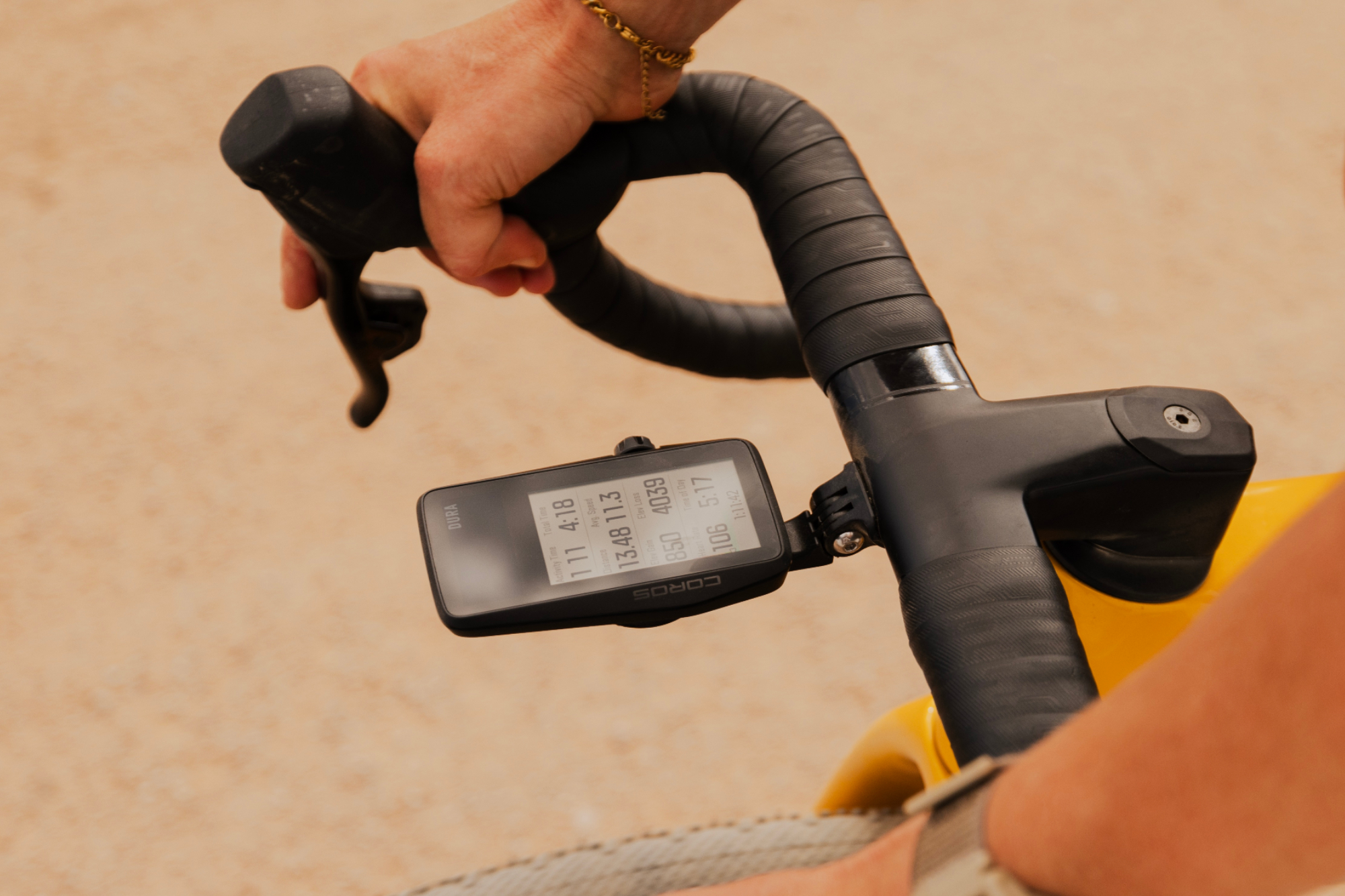
As reported by us earlier this month from Unbound Gravel, GPS sports watch manufacturer COROS is entering the cycling market with its "Dura" Solar GPS cycling computer, boasting an astonishing 120+ hour battery life.
Founded in 2016, COROS is relatively new to the sports technology industry but has quickly gained a dedicated following among endurance athletes due to its high-performance features, robust training programs, and impressive battery life.
"We have often been asked when we would create a bike computer. While we have always been passionate about cycling, we didn't want to develop a new head unit without creating something different," the brand states.
With the Dura, COROS aims to supply athletes with "the ultimate cycling adventure and training companion" and has specifically set out to serve gravel racers, FKT chasers, brevet riders, and ultra-long-distance adventurers.
"Simplicity is the guiding principle for the new bike computer. COROS has prioritized rider experience by addressing multiple pain points," the brand states. "From seemingly endless battery life to using Google Maps for navigation, to lightning-fast upload speeds and much more."
The unit's most remarkable feature is its 120-hour battery life, which operates independently of its solar panels. Like Garmin's Solar products, the solar panels on this device extend the battery life rather than recharge the battery. COROS claims that an hour of direct sunlight can add up to two hours of ride time.
Beneath the solar panels sits a 2.7-inch MIP colour touchscreen. For those who prefer tactile controls, the side of the device includes a dial and button, allowing for easy interaction with the computer's many customizable pages. This all comes in a sleek and compact package, weighing just 97 grams and measuring 99.5 x 60.8 x 15.7 mm (3.92 x 2.39 x 0.62 inches).
COROS promises to deliver all the features cyclists have come to expect from a GPS head unit, complemented by COROS's robust training platform, which is accessible via the mobile app and the desktop Training Hub and free for device users. This service enables athletes to analyse performance metrics, communicate with their coach, create personalised workouts and training plans, and more. It's like having TrainingPeaks included with your watch or cycling computer purchase.
"Our goal is to create products that solve problems for athletes—whether that's to help them train, explore the world, or simply bring them closer to the sport they already love. COROS DURA is a clear extension of this ethos and truly is the ultimate adventure and training companion," says Lewis Wu, COROS Co-Founder.
The all-new COROS Dura is available for pre-order starting June 17 for $249 / £249 and will begin shipping to customers on July 15.
Cycling Weekly received a pre-release unit to test, so let's take a closer look at the Dura.
What is has
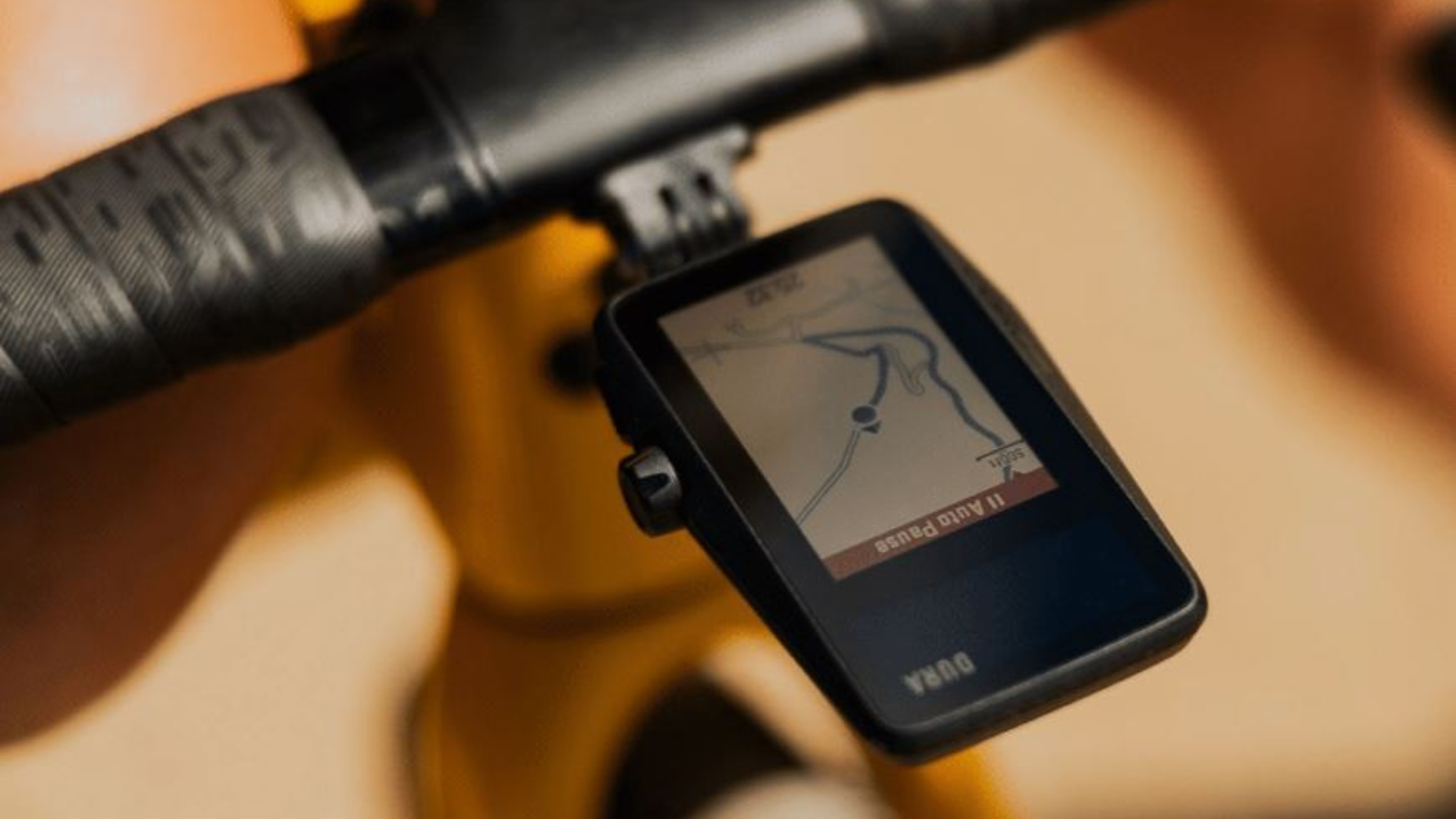
- Size: 99.5 x 60.8 x 15.7mm (3.92 x 2.39 x 0.62 inches)
- Weight: 97g head unit, 44g mount
- Sleek, aerodynamic design
- Excellent price point: $249 / £249 / EUR 289
- Battery size: 960 mAh battery
- Battery life: 120 hours excluding solar (70 GPS hours in Dual-Frequency mode)
- Solar add: 1 hour of direct sunlight adds up to 2 hours of extra ride time
- Battery charges fully in as little as 2 hours
- Screen: 2.7 inch MIP color touch screen with 240 x 400 pixel resolution
- Additional operation via a dial on the side and Back/Lap button
- Onboard sensors: barometric altimeter, accelerometer, gyroscope, compass, temperature sensor
- Storage capacity: 32GB
- Working temp: -20 C (-4F) to 60C (140F)
- Adaptive backlight
- In-app route builder
- Smart rerouting (via app)
- Standard quarter-turn interface*
- Bluetooth/ANT+/WiFi connectivity
- Dual-Frequency GPS (L1+L5)
- Auto GPS mode: GPS, GLONASS, GALILEO, Beidou, QZSS
- IP67 water resistance
- Crash detection
- Bike alarm
- Live tracking
- Notifications
- Third-party app syncing
- Free workouts and training plans available in app and desktop platform
- Together with a COROS watch, the ecosystem offers a 24/7 profile of your fitness and training status incl. Sleep, HRV and Daily Stress data
*note: we found that the unit fit rather loosely in my stem-specific K-Edge mount, which COROS rep told us was a known issue. COROS has since increased the size of the tabs on the back of the DURA after the first production run of units so they will fit all K-Edge mounts more tightly.
What it doesn't have (at the time of pre-release testing)
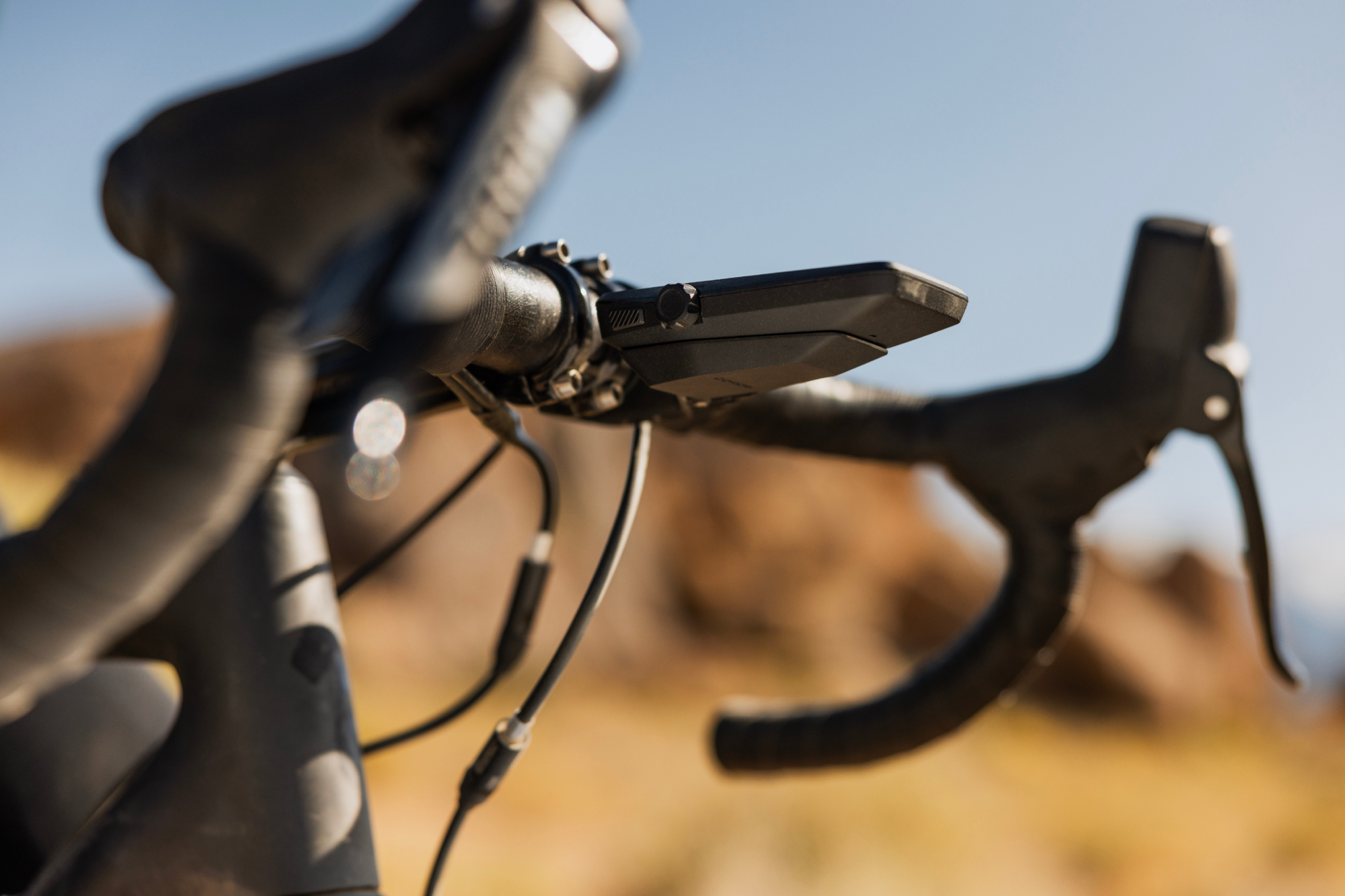
- Street names or POI on device maps
- Integration with Ride with GPS
- On-device rerouting
- "Climb" feature
- Temperature, Weather, Wind data
- Strava live segments
- Lap Summary Data
- Location on unit
What's coming soon
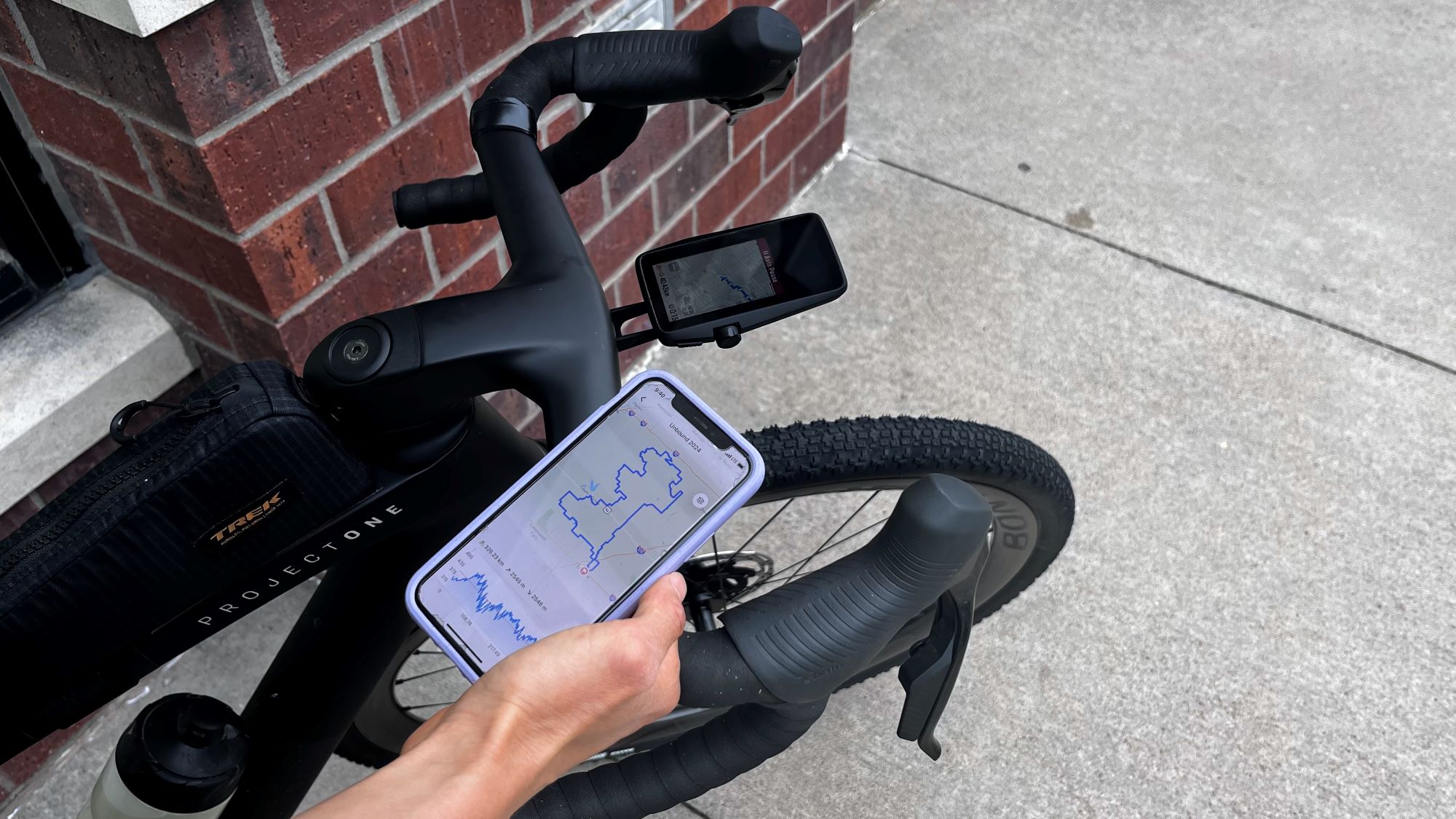
- Ride with GPS integration (Available starting this week)
- Cycling activities and full workout builder support on COROS Training Hub (Available starting this week)
- Outdoor Temperature readings (Available from July 1)
- A "Climb" feature when following routes will be improved and will better display long climbs
- Strava Live Segments
- Shorter sync time for sending Strava routes to the COROS app
- Media controls for playback on phone via Bluetooth
- Optimizations for Turn-by-Turn so that its more responsive at high speeds
"Like with all COROS products, we will continue to regularly update the product with more software updates intermittently over the course of the year and beyond," Coros says.
First impressions:
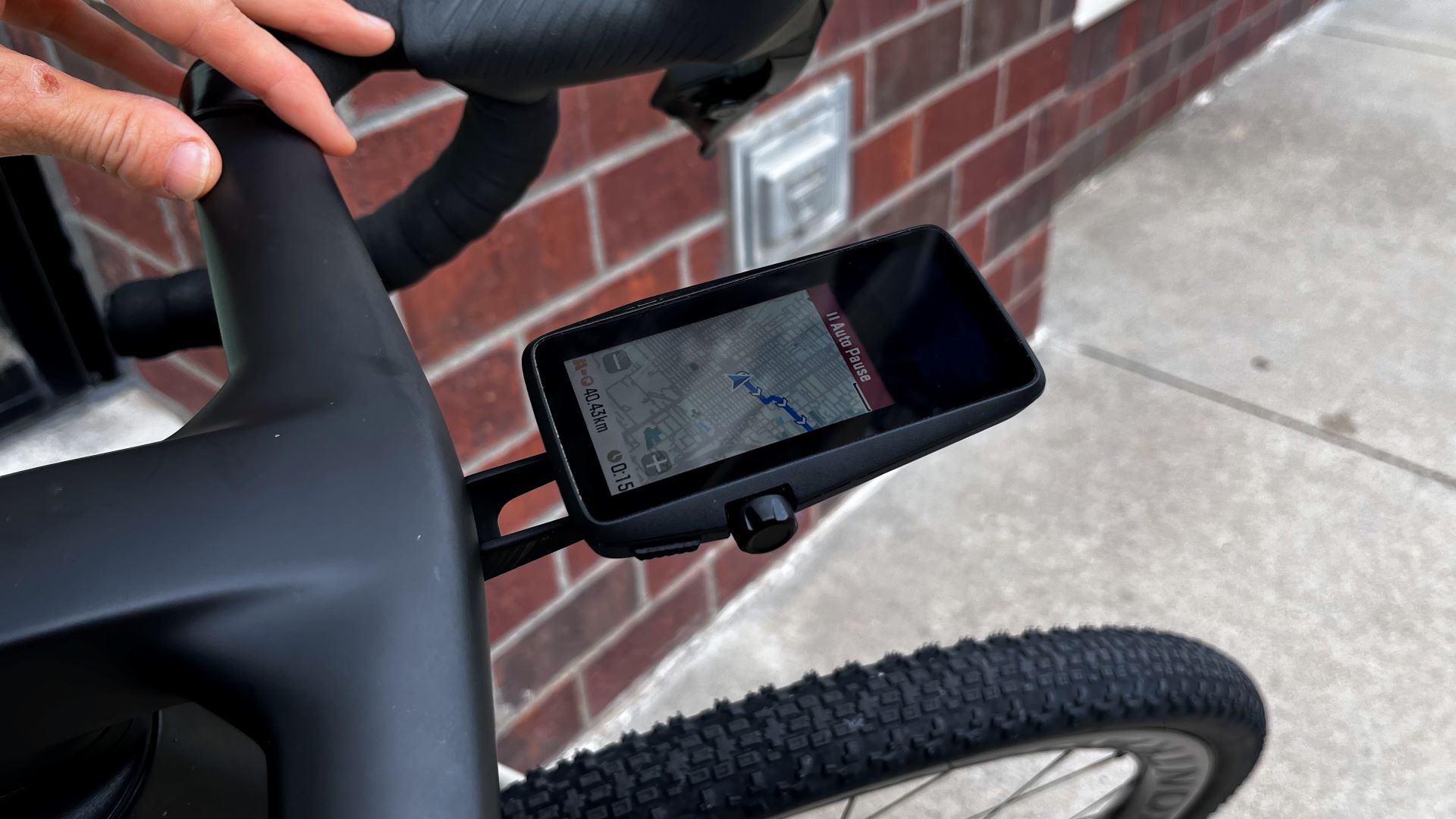
We received our test units only a week before launch, and thus, our time with the Dura GPS cycling computer has been brief, but we will share our first impression now and a full-fledged review later this summer.
Initial unboxing impressions were that the unit is surprisingly sleek and light, given its claimed battery life and host of capabilities. For comparison, the Dura is smaller than a Garmin Edge 1040 and more similar to the Hammerhead Karoo but thinner.
The Dura sports a decently-sized colourful display –though lacking in both size and graphics when compared to, say, the latest Hammerhead Karoo– and a solar panel that is much larger than what we've been seeing on Garmin's Solar products. The dial on the side of the unit is a nod to the brand's watch heritage. In wristwatches, this knob is called a crown and traditionally had the essential function of setting the time and winding the watch. The 'crown' on the GPS cycling computer allows you to navigate the unit's settings and pages.
The real star is, of course, the battery life. After a week's use, including one eight-hour adventure, the battery is still above 70%.
There is always a learning curve when switching to a new ecosystem of products, and I recommend users take some time getting to know the Dura and the companion app, especially. A lot of the device's settings and customizations are accessed via the app and can't be accessed via the unit itself.
I experienced a few hiccups in my admittedly few test rides that left me somewhat underwhelmed. This is, however, largely due to the many features being unavailable until public launch or ship time. These hiccups included the lack of integration with Ride with GPS (which will be fixed by launch time), the slow-to-respond zoom in and out buttons on the touch screen and some navigation issues.
The on-device map doesn't show any street or trail names, nor does it indicate any points of interest. For a product targeted at the more adventurous of cyclists, my biggest concern lies in its rerouting abilities or rather, its limitations.
COROS claims, "If you change your mind mid-ride, search for new destinations on your phone or draw a new route, COROS DURA will sync the updated route in seconds." This might work well in a city, but it falls short in remote backcountry settings where there is no cell phone reception.
The Dura is one of the few computers in its class that doesn't sport on-device rerouting abilities. Instead, it relies on the app and cellular connection or WiFi.
"The thinking here is that *most* of the time when you need this kind of rerouting assistance, you're in a more dense urban environment with multiple routes to the same destination (where you're likely to have cellular coverage)," COROS tells Cycling Weekly.
"Conversely, when you're out in the backcountry or in more rural areas where you might not have cellular coverage, it's usually pretty simple to find your way back on route by looking at the map if you make a wrong turn."
From experience, I have to disagree with this logic. More than once, I have found myself in a wooded area, far away from any civilization, staring at five identical-looking gravel paths, wondering which was going to take me in the direction I actually wanted to go. In these situations, I've come to rely on on-device rerouting or my watch's ability to route me to the nearest POI to get me back on track.
Additionally, the rerouting is powered by Google Maps rather than OSM Cycle, which doesn't generally suggest or even recognize gravel trails. It prioritises paved, known roads. As such, I recently found myself being rerouted to a heavily trafficked highway rather than the lovely, quiet gravel roads my route was meant to take me on.
Luckily, COROS revealed that it does plan on bringing a reroute functionality to offline maps ASAP.
The Dura's battery life is truly astonishing, setting a new standard in the market. Its price is highly competitive as well. Other solar products carry a price tag of at least $100 more, sometimes as much as $500 more like the Garmin Edge 1040 Solar.
Garmin and Wahoo have long dominated the GPS cycling computer space, so the emergence of a strong competitor would be a welcome development.
Consumer units won't ship until July 15. As such, I and our other testers look forward to testing the features as they roll out. We will report back with a full-length review later this summer.







